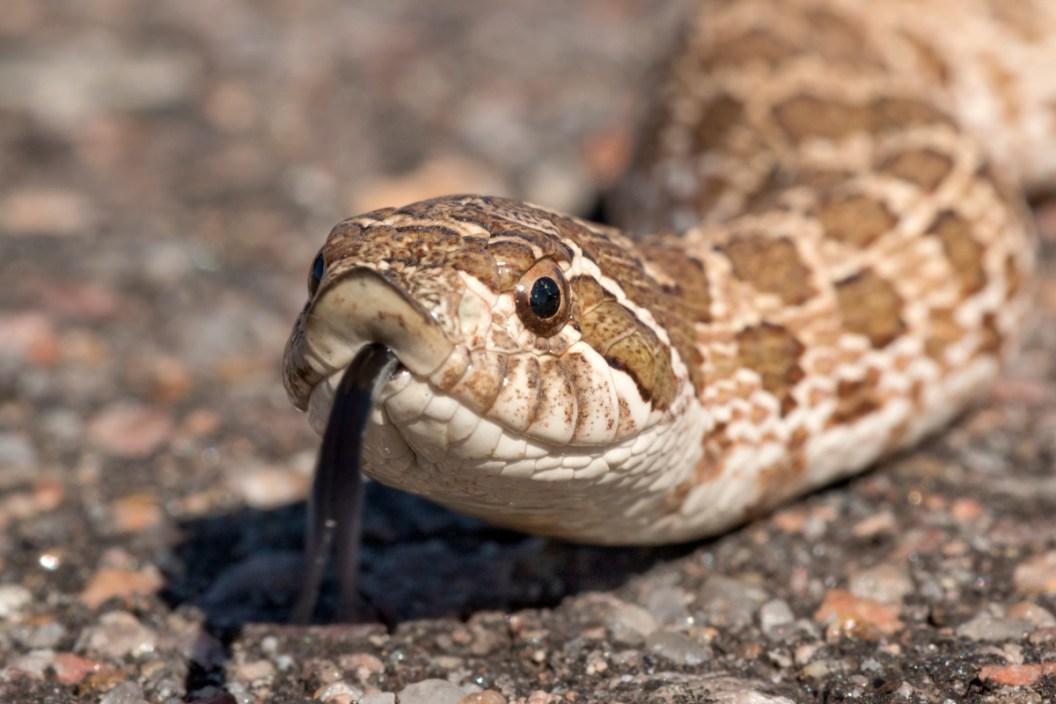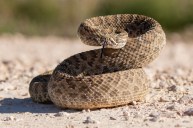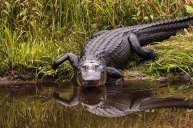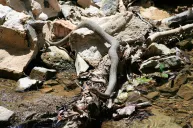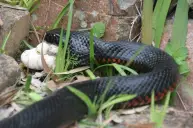The western hognose snake isn't just some creepy reptile, it is a very important species of the American west.
The western hognose snake (Heterodon nasicus) is a species of nonvenomous snake that is indigenous to southern Canada, south Arizona, New Mexico, and Texas, and further into parts of northern Mexico.
This particular reptile prefers scrubby, flat prairie areas with loose, sandy soil suitable for burrowing, but it can be found in low-lying areas with suitable ground.
The western hognose snake is a daytime feeder (diurnal) which prefers amphibians, such as large and medium-sized tree frogs. Although it will also eat small or medium-sized toads and small lizards. This reptile exhibits some truly unique behavior that makes it stand out from other species. Let's take a closer look at the one of nature's bluffer snakes.
Western Hognose Snake

Getty Images: milehightraveler
According to Reptiles Magazine, the western hognose come in a variety of naturally occurring colors and physically: "It has a stout build, is covered in keeled scales, and possesses a sharply upturned snout that is used for digging and burrowing in loose sandy soils and to hunt for prey." In addition to amphibians, its prey items may be simply small rodents.
The Western hognose is a bluffer that is best known for its wide array of harmless defensive ploys. One technique that is uses is accompanied by a loud hiss which is achieved by the snake forcing air through its unique skull and rostral bone structure.
Western hognose snakes sometimes feed on small lizards, reptile eggs, and small rodents, but their favorite source of food is toads that they find burrowed in the sand. Breeding season for these snakes occurs sometime between March and May with the female laying 10 to 20 eggs in a sandy nest.
Their lifespan is somewhere between 15 and 25 years depending whether they are wild or captive animals. They are considered a non-venomous snake, but they do produce a toxic saliva which is not extremely harmful to humans, as a bite will only cause slight swelling and pain.
It also has an amazing ability to compress its entire body when it feels threatened while it flattens out the ribs along its neck to create a "hood" somewhat similar to a cobra. More than one person has gotten freaked out upon seeing this display simply because the hognose is not as well known. It has probably led to some people In fact, it will strike a threat with a series of movements that will hit a predator with its heavily keeled snout, but it does not actually bite.
As a last gasp effort the hognose will comically call it a day, keel over and play dead to avoid a threat. They'll even sometimes start squirting a foul-smelling musk from its anal glands to further the effect. If there was an Oscar given for best acting by a reptile, odds are the hognose would win it hands down!
Western Hognose As a Pet
The western hognose snake is not only an active snake in the natural world, but it is a very popular one to keep in captivity too. Female hognose snakes grow to be about three-feet long, with the males being smaller. These reptiles can live up to 15 years in captivity, but less in the wild. A five-gallon reptile terrarium with a secure lid is ideal for a hatchling, but for adult snakes a larger 20-gallon enclosure is better suited due to its larger floor space.
Although wild Western hognose snakes inhabit regions with sandy, loose soils, you should not use sand in their enclosures due to the threat of impaction. Feeding them is as easy as finding gathering frozen/thawed mice and offering them up with a pair of hemostats.
The Last Word

Getty Images: Timothy Price
The western hognose stands out from many other species of North American snake in both appearance and behavior. The hognose has a unique natural history, especially that effective and hilarious self-defense mechanism. It is known for its trademark pointy nose that is used to borrowing and hiding in sand and loose gravel, and vine more so for its ability to fend off threats with their amazing bluffing abilities. If you encounter one in the wild, it's best to just leave it alone. Odds are if you do that, it will do the same to you.
Products featured on Wide Open Spaces are independently selected by our editors. However, when you buy something through our links, we may earn a commission.
Looking for a new way to display those antler sheds? Go to Rack Hub and use the coupon code Craiger. Be sure to follow my webpage, or on Facebook and YouTube.
NEXT: GIRL FEARLESSLY HOLDS A DIAMONDBACK WATER SNAKE
WATCH
